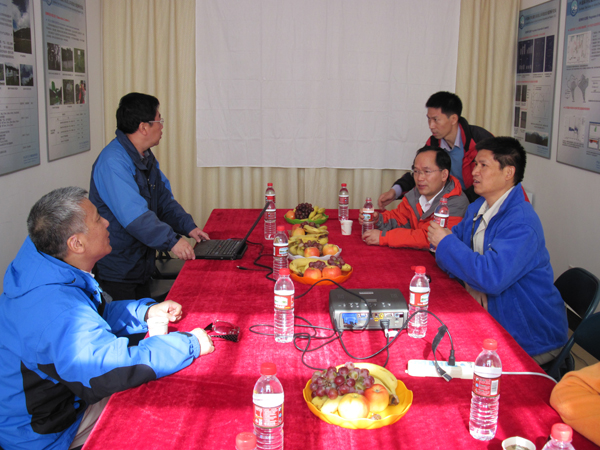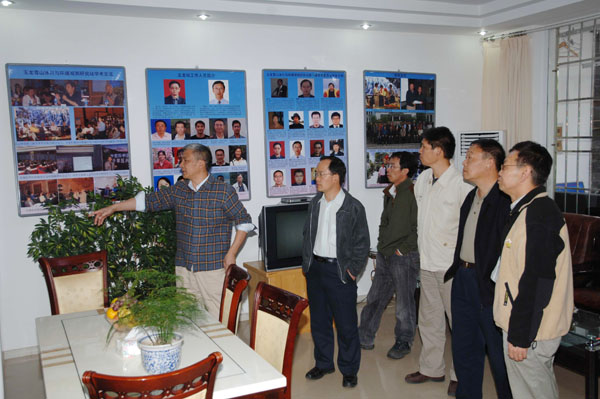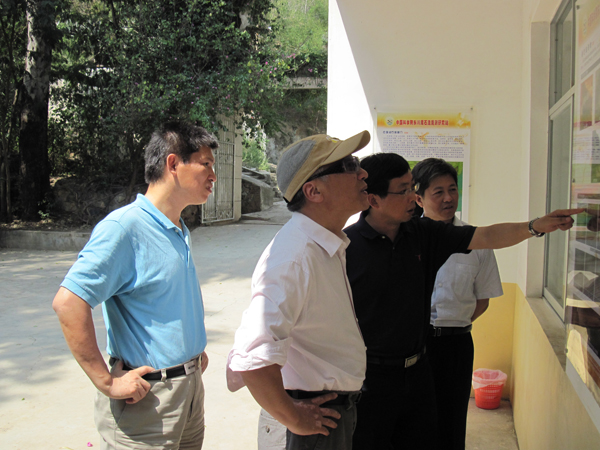| News |
| Latest news | |
| Int’l Cooperation activities | |
| Events & Announcement | |
| Recent Activities |
| Location: Home>News>Latest news |
| CAS Vice Presidents interested in environment in southwest |
During Sept 6-11, 2009, CAS Vice Presidents Profs. Wenlong Zhan and Zhongli Ding led a delegation to Tibet and Yunnan in southwest China to study the environment, especially the glacial status in the region. The delegates visited the SouthEast Tibetan Observation and Research Stations for the Alpine Environment, Yulong Snow Mountain Observation and Research Station for Glaciers and Environment, and National Key Field Observation Station at Dongchuan for Debris Flow on their way.
Both vice presidents not only acquainted themselves with the observation and study of marine-type glaciers at Yulong,Yunnan, hoping the monitoring of the Yulong Snow Mountain will serve as a model for China’s marine-type glacier and related environmental study, but also showed concerns about such geological hazards as debris flow in southwest China, confirming Dongchuan Station’s role in enhancing national capacity in hazard mitigation and prevention, and calling on a systematic network of high automation for hazard monitoring in geologically dangerous regions.
Regarding the field observation and monitoring on the Tibetan Plateau, the vice presidents proposed four aspects of future endeavor. Firstly, good scientific questions are important in addition to reliable field observation. Then, multi-disciplinary research is encouraged between and among various research institutions within the CAS. Thirdly, efforts should be made on the construction and upgrading of the Tibetan Observation and Research Platform. And finally, international engagement in macro-science engineering should be fully taken advantage of in conducting scientific work on the Plateau. With the integration of the four aspects, they hoped that field monitoring on the Plateau would be combined properly with data acquisition and modeling, so as to make breakthroughs in international Tibetan Plateau research community and meet the national strategic demand in concern.
|



